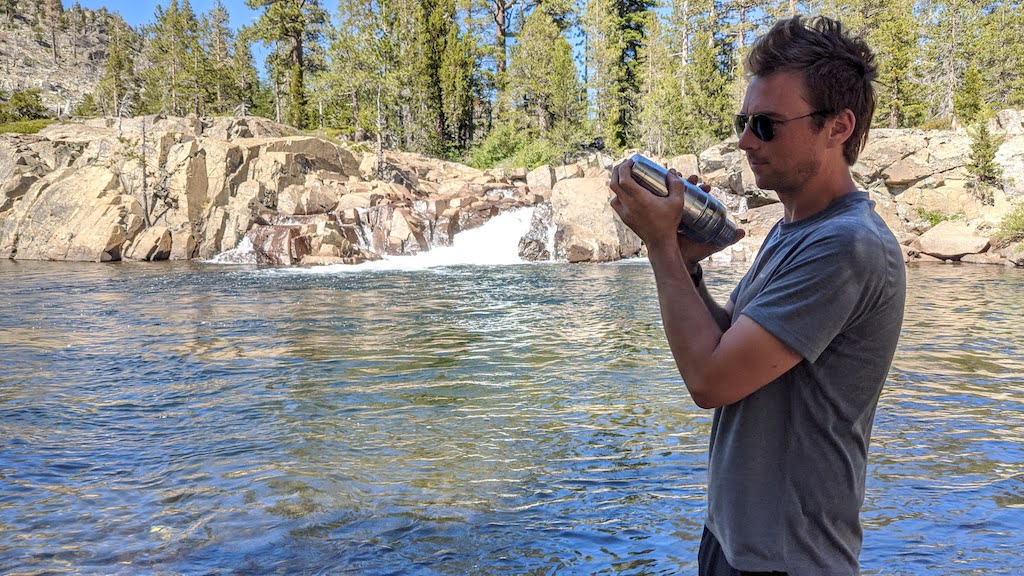
My friend George kept his cat food in a metal cabinet to keep it from the raccoons. The figured out how to work the latch and open the doors. So he started locking the doors. They found the key (hanging on a hook nearby) and stole it. He had to break the latch to open the doors. Problem solved.
Author Archives: Steve Mays
Cognitive Assessment
6,200 thoughts per day
“A new study from psychologists at Queen’s University in Kingston, Ontario Canada reports observations of the transition from one thought to another in fMRI brain scans. Though the researchers don’t detect the content of our thoughts, their method allows them to count each one, and they say we have about 6,200 thoughts per day. The researchers refer to them as “thought worms.”
“We had our breakthrough by giving up on trying to understand what a person is thinking about, and instead focusing on when they have moved on. Our methods help us detect when a person is thinking something new, without regard to what the new thought is.”
1970 280SE Cabriolet

This is a 1970 280SE Cabriolet. Mr. Wolf is — I assume — selling this for one of his clients. In addition to working on “specialty vehicles,” Mr. Wolf buys and sells on commission. He found my Land Rover and more than earned his 10 percent commission. More photos of the beauty above can be found here.
Social distancing California style
My buddy Grayson Wolf and his wife Larisa loaded up his 1967 Unimog 404 and drove up into the Sierras for a little break from the pandemic. (More photos here)


Two things in the photo below caught my eye: the well-stocked bar and what looks like a picnic table in the back of the vehicle. Grayson explains:
“It is essential to make six-ingredient cocktails when you’re camping next to a three ton military truck, right?
And that “picnic table?”
A German beer hall table, to be precise, and it is bolted to the bed. Nice place to eat our meals.”
Okay, three things. Grayson has brought back the mohawk.
Life goes on!
The Way We Were
Some thoughts on the “Back to work! Back to school! Return to normal!” controversy. Let me say up front, I don’t have to work (retired) and I don’t have children so you might say I don’t have a dog in this hunt (except to the extent everything is connected to everything. Totally.)
I’m not convinced that most politicians really give a shit about getting kids back in school, except that it’s necessary in order for mom and dad to get back to work. If every child in America missed a year of school it wouldn’t be the end of the world. The end of the parents’ sanity perhaps. No, I think there’s something deeper at work here. Allow me to share my theory (which I pulled out of my ass).
The Brush Fire Analogy
Back when I watched network and cable news shows, the raging brush fires in the western states was a staple. And every so often we were treated to a forester explaining we needed fires like this every so often to burn off the underbrush and if we don’t let that happen, well you get a worse fire. After the fires burn out we get video of blackened hillsides and scorched earth. But in a few years nature recovers. No big deal for Nature, but not so good for the folks who built multi-million dollar homes in the wilderness.
Where was I going with this? Oh, yeah. The reason (okay, one of the reasons) so many people are frantic to “get back to normal” is they fear they might not get back to normal. To the way we were before the pandemic. Now, they can’t imagine what that might look like but they’re pretty sure they wouldn’t like it.
If we survive the pandemic (and whatever comes after the pandemic), most folks assume/hope/believe life will be pretty much like it was before. And the longer it takes us to get there, the greater the chance it won’t be. And that is terrifying for most folks. Their sense of self (who they are) is all tangled up in familiar institutions and routines and relationships. Blow all that up and you blow them up. In truth, things are never they way they were but it usually happens so slowly we don’t notice.
“Nothing was the same:
“Great crises tend to bring profound social change, for good or ill. […] After the Black Death, nothing was the same,” Pomata said. “What I expect now is something as dramatic is going to happen, not so much in medicine but in economy and culture. Because of danger, there’s this wonderful human response, which is to think in a new way.” — (How Pandemics Wreak Havoc—and Open Minds)
I seem to recall a few courses in European History during my school days but I’m pretty sure they didn’t give much space to the Black Death. Interesting days ahead here in the USofA.
Caronacoaster
noun: the ups and downs of a pandemic. One day you’re loving your bubble, doing work outs, baking banana bread and going for long walks and the next you’re crying, drinking gin for breakfast and missing people you don’t even like.



